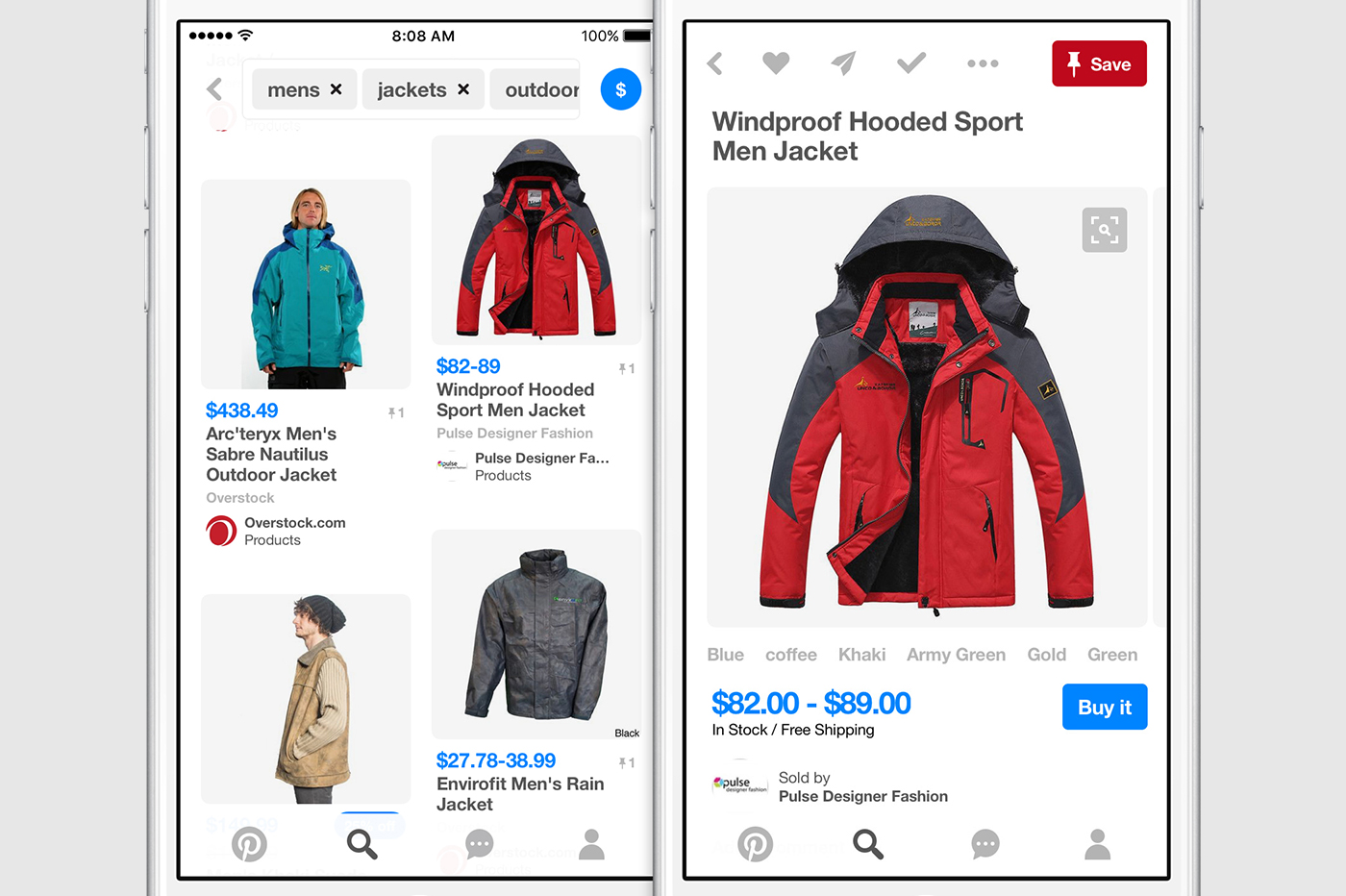How Pinterest Became More Shopper Friendly In 2016

Previously, if a consumer wanted to purchase a product they liked based on Pinterest board recommendations, they were forced to visit a third-party blog before they found the product link they were looking for.
But as of this past fall, Pinterest made a from the “If you can’t beat them, then join them” playbook – Pinterest officially took steps to transform from a pure social media platform into an eCommerce destination.
Here’s a few crucial steps that Pinterest implemented in order to benefit both advertisers and grassroots bloggers and sellers.
They Implemented Buyable Pins
Buyable Pins officially debuted at the end of Q2 of 2015, but they were re-introduced this past fall. Buyable Pins are pinned posts that are designated with a widget, allowing shoppers to click on the product that they’re interested in.
After clicking, the shopper will be able to select the product in the size, color, and quantity they desire. Then, they’ll complete their purchase directly on the Pinterest platform. Particularly, they’ll be able to purchase their desired product directly on a publisher’s Pinterest board. The method of payments that are accepted for a Buyable Pin post are all the major credit cards, and iPhone Apple Pay.
In the past, shoppers could only complete these type of transactions via Android and iOS apps. What makes the program renewed for 2016 is that shoppers will be able to make these type of purchases via web browsers-this means that shoppers can use their desktop and their laptop computers to make purchases, starting this year, and beyond.
They’ve included shopping bags and suggestions
The earmark of any eCommerce platform is the shopping cart, or in some cases, the shopping bag. These are widgets that allow shoppers to reserve links to specific products they’ll purchase, either immediately, or at a later date.
Another way that Pinterest is making the transition into an eCommerce platform is its addition of shopping bags as a part of the Buyable Pin boards. This is a widget that will be utilized primarily by large advertisers, the major online stores who have realized the benefits of using Pinterest as a marketing and shopping platform.
In addition, Pinterest is tearing out a page from Amazon’s playbook by implementing suggested products to purchase. Amazon has realized huge revenues by making suggestions for upsells and cross-sells, and Pinterest wants to use this no-brainer tactic to boost its revenues, too.
Opening up the floodgates for affiliate marketers
In previous years, Pinterest clamped down hard on affiliate marketers, and specifically, the company clamped down on pins that included links to affiliate sales pages. This was done in the effort to combat low-quality, spammy pins, along with links to spammy affiliate products (usually found in the digital product space).
But Pinterest’s CEO announced this past September that due to improved spam filters that have been implemented to weed out spammy and offensive pins, the company as a whole has dropped its rule about linking to affiliate sales pages. This means that affiliate marketers can directly lead shoppers to qualified sales pages. This allows marketers to sell their products with increased efficiency and engagement.
First, marketers won’t be required to create a special link that leads the shopping prospect to a blog post or a video in order to find the original affiliate link. Second, since buyers aren’t forced to engage with an extra step, they’re far more motivated to make purchases-this is a huge boon for both marketers and advertisers.
And finally, since marketing publishers aren’t required to create an extra step in their sales funnel, they can improve their revenue margins by focusing their energy on creating more pins, instead of creating blog posts and videos in order to make sales.
Adelin Cai, a spokesperson for Pinterest writes:
In the past, we removed affiliate links from Pinterest because spammers were abusing them. Now that our spam detection system is so much stronger, we’re ready to allow affiliate links again. To make way for these changes, we’re making minor updates to our acceptable use policy. We’ll start rolling out all affiliate networks today and over the coming weeks.
If you use affiliate links on your site, you don’t have to do anything differently—just keep on Pinning as usual.
Best practices for advertisers and marketers
For brands and affiliate marketers who are interested in taking full advantage of the transformations in Pinterest, The Social Media Examiner offers a few tips:
Before you start adding pins with affiliate links, you need to make sure the boards on your Pinterest profile share a branded look that represents your business. You want the overall look of your Pinterest presence to tell people what you’re about at a glance, without them having to do too much reading.
Choose the product you want to share and decide which board you’ll pin it to. For example, if you have an affiliate link for miniature piñatas, you can pin it to a board full of products and decorating ideas for Cinco de Mayo parties. After ensuring all of your affiliate links have been added correctly, you’ll likely want to increase exposure for them.
While you can take advantage of promoted pins to get more eyes on individual affiliate pins, a great option for driving traffic to boards that have affiliate pins is to share them on your other social platforms.
What about you? Are you excited for these developments at Pinterest, or do you have another opinion? I’d love to hear it in the comments!






This is great! I had no idea I could post affiliate links on Pinterest. This is especially great because I’ve only just started my blog, which has about 3 blog posts and no affiliate links yet. I am, however, working with Share-sale, and have been approved by a few merchants. I cants wait to get on this bandwagon!